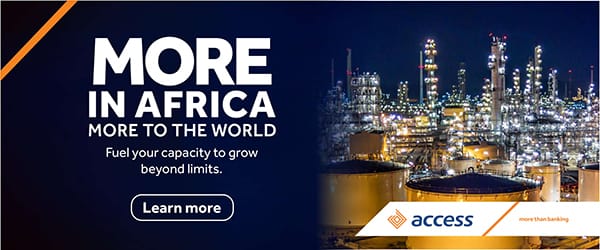Oil Prices Pull Back as U.S Crude Inventories Rise

Oil Prices Pull Back as U.S Crude Inventories Rise
Oil prices pull back Wednesday after crude lifting has seen a multi-year increase following stock build in the United States (U.S). Data shows that inventories of commercial crude in the US rose for the second consecutive week as oil prices fell after reaching record highs on Tuesday due to strong demand amid limited supply.
Oil stockpiles increased by 2.3 million barrels to 420.9 million barrels in the week ended Oct. 1, the Energy Information Administration said Wednesday.
Supplies were about 7% lower than the five-year average for this time of year. Analysts had expected a decrease of 418,000 barrels, according to Investing.com. A week earlier, inventories rose by 4.6 million barrels.
West Texas Intermediate crude futures fell about 2% to $77.32 a barrel on Wednesday after surging above $79 on Tuesday, representing the highest level since 2014. Brent, the international benchmark, was also down around 2% to $80.96 a barrel after reaching a three-year high on Tuesday.
The price surge was driven by strong global demand amid limited supply as countries such as India warned about having only four days of coal reserves left, while Germany was reportedly running out of fuel, Stifel Economics Chief Economist Lindsey Piegza wrote on Tuesday.
Meanwhile, OPEC and its allies on Monday said they will boost the output for November by 400,000 barrels per day, in line with the organization’s plan in July to increase production from August until the 5.8-million-per-day cut is phased out by the end of September 2022.
The EIA said gasoline supplies climbed by 3.3 million barrels, about 1% below the five-year average for this time of year. A week earlier, gas stockpiles grew by 200,000 barrels. Distillate fuel inventories slid 400,000 barrels, about 11% below their five-year average, compared with an increase of 400,000 barrels a week earlier.
Crude imports grew 483,000 barrels per day last week to an average of 7 million barrels. Imports averaged about 6.5 million barrels a day over the past four weeks, about 23% above the prior-year print.
Gasoline production was 9.4 million barrels, down from 9.9 million barrels a week earlier, while distillate output was 4.8 million barrels, up from 4.6 million barrels a week ago.
OPEC+ Pins Policy on View Tightness Will Ease
The Opec+ decision to stay the course with its November production policy was based on the view that current tightness in global crude markets is temporary, delegates told Argus.
The alliance agreed on 4 October to stick with a plan to increase its collective crude production quota by 400,000 b/d next month, despite Brent crude prices reaching three-year highs and calls – most notably from Washington – for the group to accelerate its monthly increases.
Output declines in Opec+ member countries Nigeria, Angola and Kazakhstan have contributed to the current supply tightness, which will ease when those countries are able to increase production, one delegate said.
Infrastructural and operational difficulties have weighed on Nigeria’s output since April, with production falling to a seven-month low of 1.34mn b/d in August, according to Argus estimates.
But State-owned NNPC managing director Mele Kyari said production will rebound next month to near Abuja’s Opec+ quota, which stands at 1.631mn b/d this month and 1.649mn b/d in November.
Kazakh production fell by 220,000 b/d on the month to 1.29mn b/d in August as a result of maintenance at the Kazakh Tengiz field. Delegates said this only leaves an unclear production outlook for Angola, where a lack of investment and natural decline at mature fields drove crude output to the lowest in around 15 years in July.
Similarly, the alliance expects crude supply disruption resulting from Hurricane Ida at the end of August to ease. Shell has restarted production at the Olympus platform in the US Gulf of Mexico, although the remaining assets in the corridor are unlikely to be back in service until early 2022.
Saudi state-controlled Aramco’s chief executive Amin Nasser said yesterday that the recent rise in gas prices could increase oil demand. But delegates, once again, dismissed the surge in prices as a “temporary” phenomenon.
The group’s decision to stick to the script is largely consistent with the cautious approach it has taken so far this year to avoid flooding the market as it juggles its production policies with the uncertainty of the Covid-19 pandemic. Although demand is returning, the virus still poses a risk to the recovery, delegates said.
But the group also had to consider the difficulties it would face in trying to push through a larger production increase given the difficulties some member countries are already facing to deliver their shares of the monthly output hikes.
Short-term infrastructure issues and longer-term field decline issues contributed to the 19 countries participating in the deal raising their collective production by just 100,000 b/d, or a quarter of the agreed quota, in August, according to Argus estimates.
Its ability to increase supply beyond the mandated 400,000 b/d will probably hinge on whether those members with production issues would be prepared to acquiesce to those without.
Opec+ countries saw little need to tackle this complicated issue just yet, with the brief ministerial meeting mainly focusing on the members voting on the recommendation to stick to the existing plan. Opec+ will next meet on 4 November to discuss the production policy for December.
Oil Prices Pull Back as U.S Crude Inventories Rise












